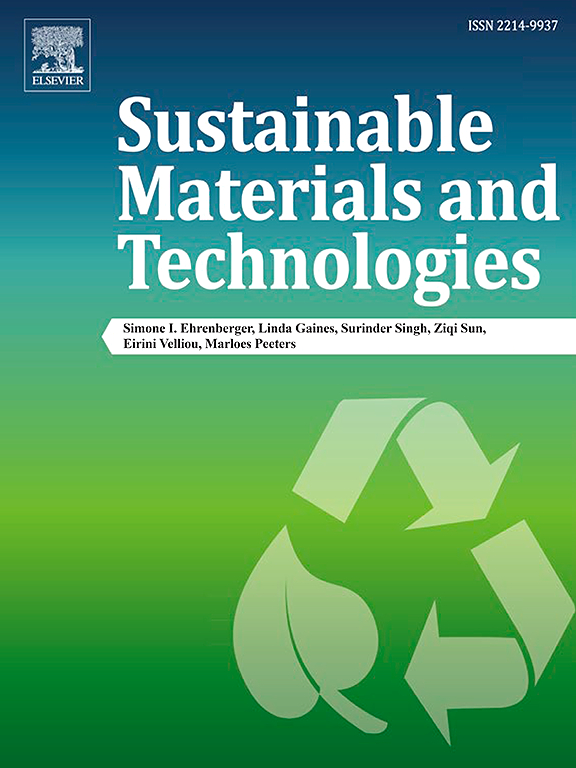Innovative multi-Z-scheme Bi2MoO6/BiOBr0.75/BiOI0.25/g-C3N4 quaternary composite with superior visible-light photocatalytic performance for degrading rhodamine B and furfural
IF 8.6
2区 工程技术
Q1 ENERGY & FUELS
引用次数: 0
Abstract
The innovation of this work lies in the integration of four semiconductors (Bi2MoO6, BiOBr, BiOI and g-C3N4) in a single quaternary composite, designed to improve photocatalytic efficiency by reducing electron-hole recombination and increasing the specific surface area compared to that of each of the four components. A novel quaternary hybrid composite with heterojunction, named Bi2MoO6/BiOBr0.75/BiOI0.25/25 %-g-C3N4, was developed by optimizing the g-C3N4 content using a simple and efficient solvothermal approach without the need for thermal treatment. The photocatalyst was characterized using various techniques including XRD, ATR, SEM-EDS, EDS-mapping, BET, XPS, UV–visible DRS, and PL. Its photocatalytic performances were assessed for the degradation of Rhodamine B (RhB) and furfural under visible light irradiation. The Bi2MoO6/BiOBr0.75/BiOI0.25/25 %-g-C3N4 composite showed significantly higher photocatalytic efficiency than other synthesized materials, achieving remarkable degradation rates of 99.47 % for RhB (15 mg/L) and 82.78 % for furfural (100 mg/L) within 120 min. Through the identification of the radical species involved in the process, a photodegradation mechanism was proposed. Indeed, for RhB degradation, the main reactive species were holes (h+), with electrons () playing a secondary role. In contrast, for furfural degradation, hydroxyl radicals (HO·) were the main contributors, while holes (h+) and superoxide radicals (), contributed equally but to a lesser extent.

创新的多z -scheme Bi2MoO6/BiOBr0.75/BiOI0.25/g-C3N4季系复合材料,具有优异的可见光光催化性能,可降解罗丹明B和糠醛
这项工作的创新之处在于将四种半导体(Bi2MoO6, BiOBr, BiOI和g-C3N4)集成在一个单一的季元复合材料中,旨在通过减少电子-空穴复合和增加比表面积来提高光催化效率。采用简单高效的溶剂热法优化了g-C3N4的含量,制备了具有异质结的新型四元杂化复合材料Bi2MoO6/BiOBr0.75/ bioi0.25 / 25% -g-C3N4。采用XRD、ATR、SEM-EDS、EDS-mapping、BET、XPS、uv -可见光DRS和PL等技术对该光催化剂进行了表征,并对其在可见光下降解罗丹明B (Rhodamine B, RhB)和糠醛的性能进行了评价。Bi2MoO6/BiOBr0.75/ bioi0.25 / 25% -g-C3N4复合材料的光催化效率明显高于其他合成材料,在120 min内对RhB (15 mg/L)的降解率达到99.47%,对糠醛(100 mg/L)的降解率达到82.78%。通过对参与该过程的自由基种类的鉴定,提出了其光降解机理。事实上,对于RhB的降解,主要的反应物质是空穴(h+),电子(e−)起次要作用。羟基自由基(HO·)是糠醛降解的主要贡献者,空穴(h+)和超氧自由基(O2•−)的贡献相同,但程度较低。
本文章由计算机程序翻译,如有差异,请以英文原文为准。
求助全文
约1分钟内获得全文
求助全文
来源期刊

Sustainable Materials and Technologies
Energy-Renewable Energy, Sustainability and the Environment
CiteScore
13.40
自引率
4.20%
发文量
158
审稿时长
45 days
期刊介绍:
Sustainable Materials and Technologies (SM&T), an international, cross-disciplinary, fully open access journal published by Elsevier, focuses on original full-length research articles and reviews. It covers applied or fundamental science of nano-, micro-, meso-, and macro-scale aspects of materials and technologies for sustainable development. SM&T gives special attention to contributions that bridge the knowledge gap between materials and system designs.
 求助内容:
求助内容: 应助结果提醒方式:
应助结果提醒方式:


